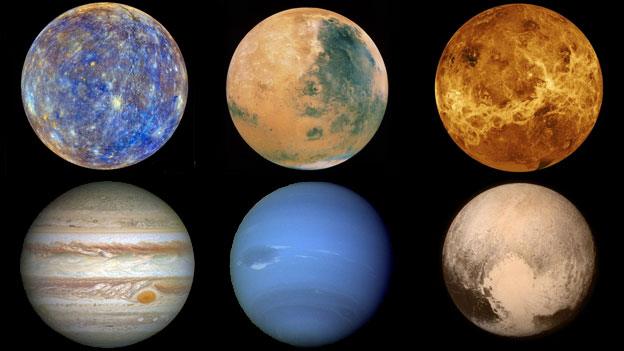Space: What is the Mars equinox?
- Published
- comments
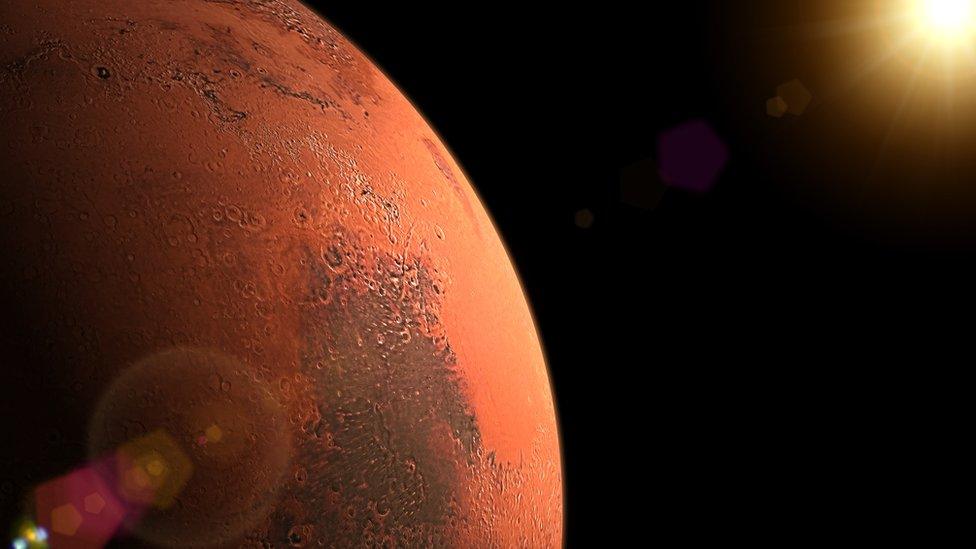
This week it's equinox on the planet Mars.
It might sound a bit alien, but it's something that also happens here on Earth.
In fact equinoxes occur on all the planets in the Solar System.
It basically means the top half of a planet (the northern hemisphere) is entering autumn, while the bottom half (the southern hemisphere) will see the start of its spring season.
Equinox comes from the Latin words equi and nox. Equi means "equal" and nox means "night".
Equinoxes describe the point in a year when one half of the planet (a hemisphere) switches from pointing towards or away from the Sun.
Mars experiences two in a year and the next will take place in February 2021.
A year is the time it takes a planet to make a circle around the Sun. A year on Earth lasts 365 days. But because Mars is further away from the Sun, it takes longer for it to go round. So, one Martian year lasts 687 Earth days!
WATCH: Equinox - what is it and when is it?
What are the seasons like on Mars?
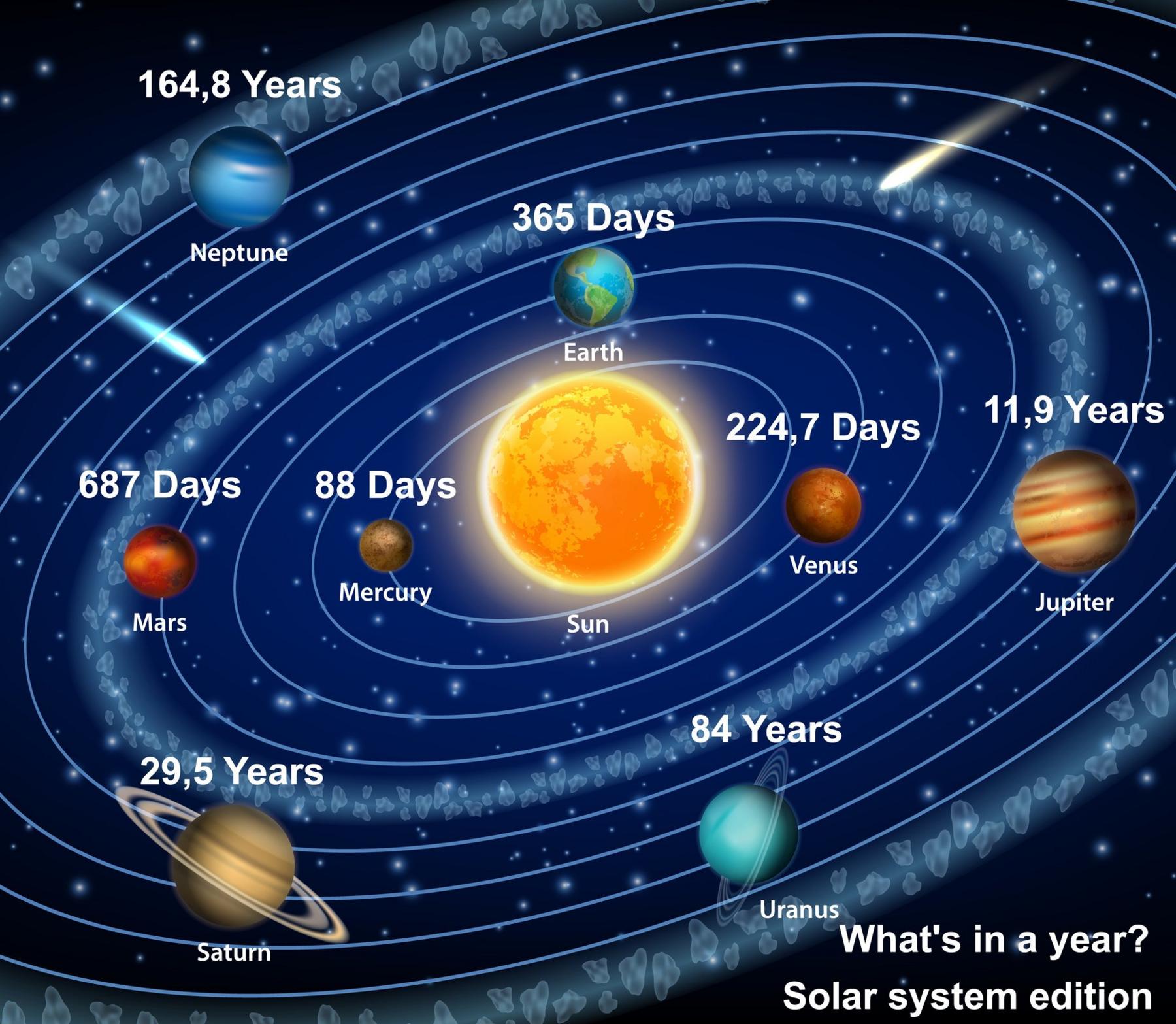
Here on Earth we have four seasons; autumn, winter, spring and summer. Mars also goes through four seasons!
Mars and Earth are tilted at almost the exact same angle. As a result, the amount of sunlight the northern and southern hemispheres receive on both planets changes throughout the year, depending on how close or far away they are from the Sun.
Unlike Earth, however, the seasons on Mars are pretty lengthy as a year on the planet is a lot longer - 687 Earth days!
The seasons on the red planet are also a little different compared to Earth as its orbit is more egg-shaped.
It's closest to the Sun when its southern hemisphere (bottom half) is tilted towards the star, making the southern summer the hottest season.
Southern summers on Mars are actually very chilly compared to Earth though, as Mars is further away from the Sun.
The change in season and temperature leads to huge dust storms on the planet.
- Published7 February 2020

- Published7 March 2018
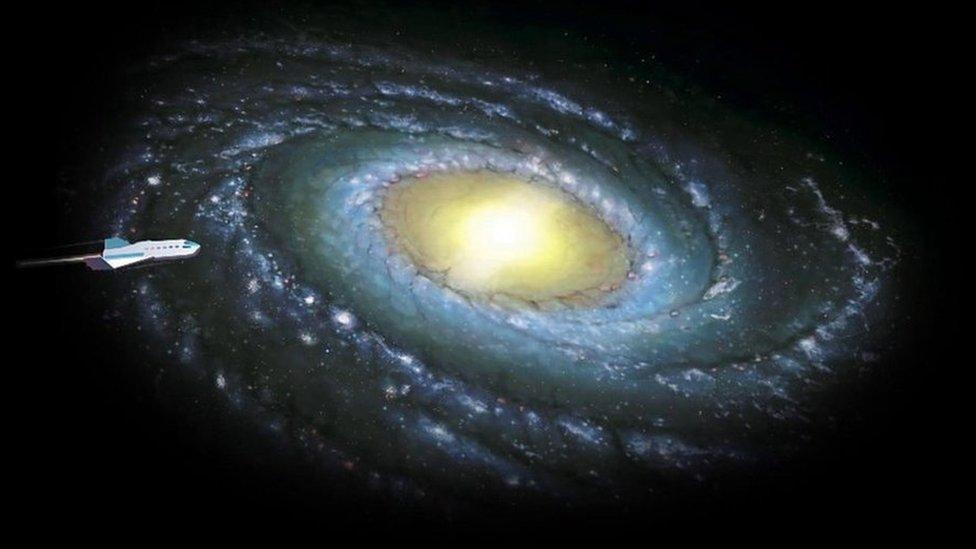
- Published20 November 2018
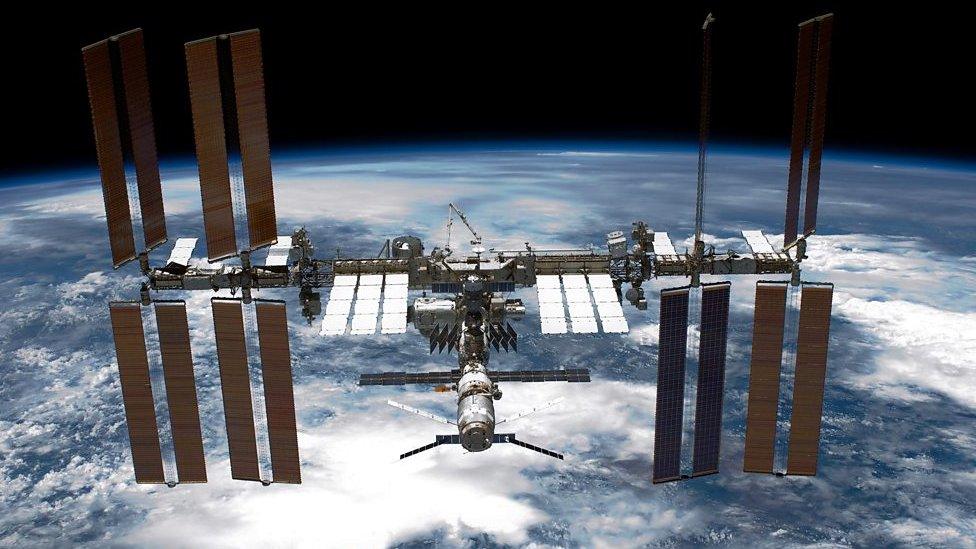
- Published6 January 2020

- Published16 July 2015
